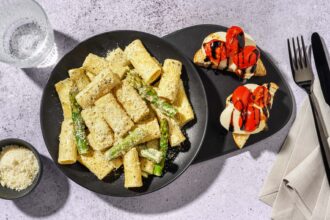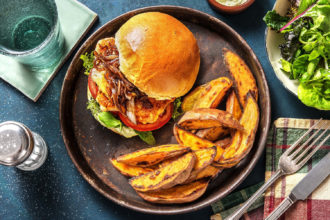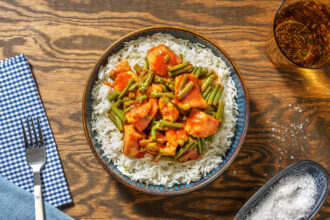How to Make Kombucha
July 5, 2024Kombucha has been a drink of choice in China, Japan and Tibet for thousands of years. Made from fermented tea, it’s without any artificial flavours or excessive amounts of sugar. To make this ancient drink yourself, follow this step-by-step guide on how to make kombucha.
What is kombucha?
Kombucha is a naturally fermented beverage typically made from black tea. To start making kombucha, you will need a ‘SCOBY’, which stands for a ‘symbiotic culture of bacteria and yeast’. A SCOBY is a disk-shaped culture that facilitates the fermentation process. A scoby generally floats at the top of a kombucha batch, but it’s still active if it sinks to the bottom. You can easily get a scoby online or find a local workshop where the scoby is provided. Don’t let your scoby dry out or put it in the fridge, as you need to keep the good bacteria alive and kicking. Always keep the liquid that comes with your scoby, as it contains lots of living goodness that should be added to your first batch.
How to make your own kombucha
The only equipment you need to make kombucha at home is a large glass or ceramic jar. A wide-mouthed container is better, as it provides more surface for active fermentation. Avoid plastic and metal vessels. You might also need a plastic funnel, a plastic sieve, and a thermometer for later stages of the process. You only need five ingredients for kombucha, and you can multiply the quantities to make more as you grow confident with the process:
- Water:
1 litre of water (250 ml of boiled water and 750 ml of cold dechlorinated water). Either boil your tap water ahead of time to dechlorinate it and let it cool down, or leave a jug of tap water on the counter overnight so that the chlorine can dissipate. - Tea:
One tea bag or 1 tsp of loose tea. The scoby likes its tea black. - Sugar:
50g-100g of ordinary cane sugar. Sugar is necessary for yeast and bacteria to reproduce and create the carbonated effect. - A small scoby:
Hydration is important, so keep your scoby in a glass of dechlorinated water until you’re ready to start brewing. - Starter liquid:
This is usually taken from the top of the previous batch and makes up around 10% of the quantity of the new batch. Use the liquid that came with your scoby if this is your first batch, and then reuse previous batches as you repeat the cycle.
This method creates kombucha in batches. The first batch serves to increase the fermenting liquid for the second batch. Use it all, except for just enough liquid for the starter liquid of your next fresh batch.
Kombucha recipe:
- Boil 250 ml of water in a pot, turn off the heat, and add your tea and sugar. Stir swiftly to dissolve the sugar. Leave for 6-10 minutes to brew.
- Remove tea from the solution. Don’t squeeze the teabags, as it can cause the brew to become bitter. Pour the solution into your jar.
- Add the cold dechlorinated water – to cool down the solution. Anything above 35°C will harm the scoby.
- Add the scoby and the starter liquid that the scoby has been sitting in. There should be a minimum of 5 cm left at the top of the jar to allow for fermentation activity and scoby growth.
- Cover the jar with a cloth or a paper towel and an elastic band, as the SCOBY needs to breathe.
- Leave to ferment for 6-9 days at room temperature away from radiators, the oven or direct sunlight. After six days, you may start sampling.
Now you are ready for the ‘secondary fermentation’, which usually takes place in a bottle, but you can use a tall glass jar as well and then decant your home-brewed kombucha into bottles. This is the stage in which you can add additional flavourings.
All cooking appliances vary. These are guidelines only.
How to flavour kombucha
There are many ways to add flavour to kombucha. You can mix the tea types in your first or second fermentation, such as white, green and black tea. You can also experiment with add-ons when decanting to bottles. Whether it’s dried fruit, fresh herbs or spices – just chop your flavouring, add it to the bottle, and watch how your kombucha develops!
Store your kombucha in the fridge and consume it within two days.
Kombucha benefits
There are a whole host of kombucha benefits. It’s a source of probiotics and is rich in antioxidants, polyphenols and acetic acid, which means kombucha can be great for your gut, immunity and skin.
Kombucha with meals
Kombucha is a great to drink on its own throughout the day or with a meal. Serve it as an alcohol-free cocktail with a wedge of lemon or sprig of mint. It’s a refreshing alternative to iced tea and fizzy drinks.
Discover a delicious range of HelloFresh recipes for a wonderful complement to your kombucha.
All food products vary. The instructions printed on the food packaging always supersedes those printed in this article and must always be followed.








